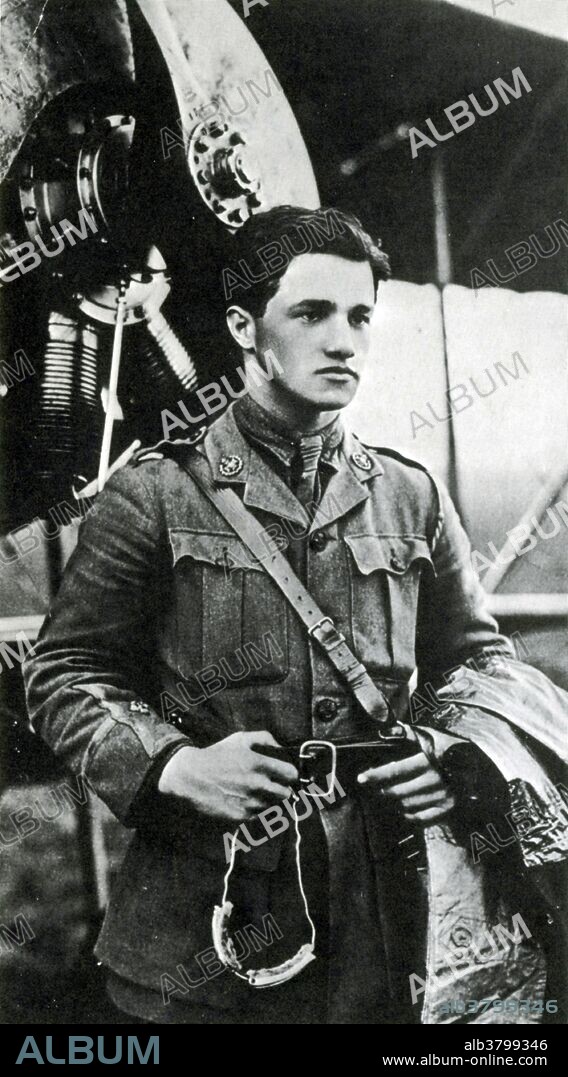alb3799346
Albert Ball, WWI English Flying Ace

|
Añadir a otro lightbox |
|
Añadir a otro lightbox |



¿Ya tienes cuenta? Iniciar sesión
¿No tienes cuenta? Regístrate
Compra esta imagen.
Selecciona el uso:

Título:
Albert Ball, WWI English Flying Ace
Descripción:
Ver traducción automática
Albert Ball (August 14,1896 - May 7, 1917) was an English flying ace. He joined the Sherwood Foresters at the outbreak of the WWI and was commissioned as a second lieutenant in 1914. He transferred to the Royal Flying Corps in 1915, and gained his pilot's wings in early 1916. He flew reconnaissance missions before being posted to No. 11 Squadron, a fighter unit, where he earned two Distinguished Service Orders and the Military Cross. He was the first ace to become a British popular hero. In the spring of 1917 he was posted to No. 56 Squadron, which deployed to the Western Front. On May 7, 1917 Ball and his squadron encountered German fighters from Jasta 11. A running dogfight in deteriorating visibility resulted, and the aircraft became scattered. He was last seen by fellow pilots pursuing Lothar von Richthofen. A German pilot officer on the ground, Lieutenant Hailer, saw Ball's plane falling upside-down from the bottom of the cloud, at an altitude of 200 feet, with a dead prop. He noted "It was leaving a cloud of black smoke ... caused by oil leaking into the cylinders." The German rushed to the crash site, but Ball was already dead when they arrived. The crashed craft had suffered no battle damage, and no bullet wounds were found on his body. He was 20 years old. Ball was posthumously awarded the Victoria Cross. Manfred von Richthofen, his most renowned enemy, remarked upon hearing of Ball's death that he was "by far the best English flying man".
Crédito:
Album / Science Source / New York Public Library
Autorizaciones:
Tamaño imagen:
2700 x 4866 px | 37.6 MB
Tamaño impresión:
22.9 x 41.2 cm | 9.0 x 16.2 in (300 dpi)
Palabras clave:
1917 • ACONTECIMIENTO • AERONAUTA • AERONAUTICA • AVIACION • BLANCO Y NEGRO • BOLA • BRITANICO • CONFLICTO BELICO • FAMOSA • FAMOSO • FIGURA • FOTO • FOTOGRAFIA • FUERZA AEREA • FUNCIONARIO • GENTE • GRAN GUERRA • GUERRA MUNDIAL I 1914/18 • GUERRA MUNDIAL I • GUERRA • HEROE • HISTORIA • HISTORICO • HOMBRE • HOMBRES • IMPORTANTE • INGLES • MASCULINO • MILITAR • OFICIAL • PERSONA • PERSONALIDAD • PERSONALIDADES • PORTRAIT • PRIMERA GUERRA MUNDIAL 1914/18 • PRIMERA GUERRA MUNDIAL • RETRATO DE HOMBRE • RETRATO • S. XX • SIGLO XX • VOLADOR • VUELO • WAR • WW1
 Pinterest
Pinterest Twitter
Twitter Facebook
Facebook Copiar enlace
Copiar enlace Email
Email
